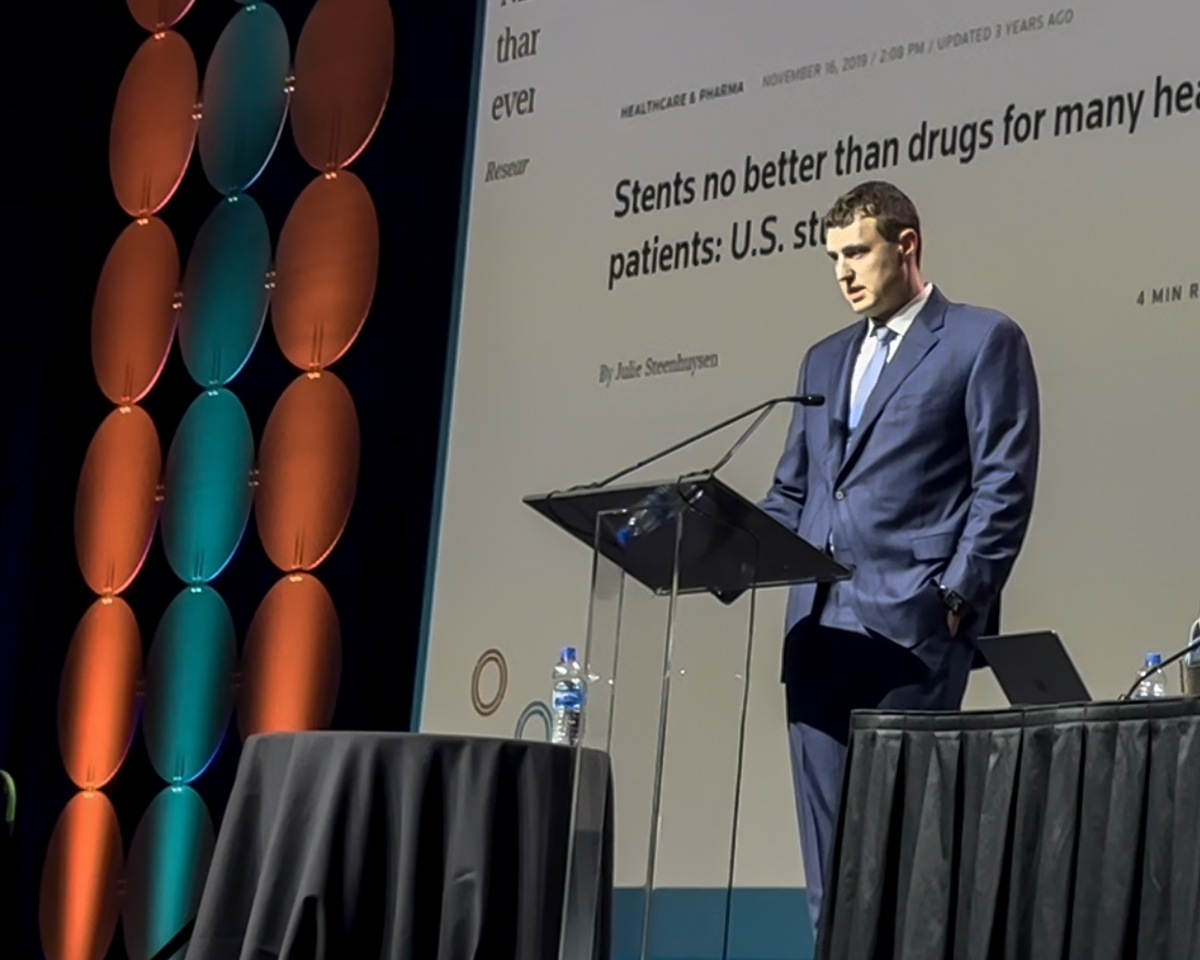
A large-scale analysis of data from the US Centers for Medicare and Medicaid Services (CMS) inpatient database, including over 37,000 patients with significant coronary artery disease requiring aortic valve replacement and coronary revascularisation, has found that patients fared better in the long term when they were treated with a surgical approach compared to transcatheter techniques.
The analysis, presented by J Hunter Mehaffey (West Virginia University, Morgantown, USA) at the Society of Thoracic Surgeons’ (STS) 2025 annual meeting (25–27 January, Los Angeles, USA) is the latest in a series of studies attempting to establish the optimal approach for the treatment of patients presenting with concomitant aortic and coronary disease, with contrasting results—prompting calls for more randomised data to settle the question.
“Very frequently during our structural heart conference we’re faced with patients who are low-risk candidates by STS risk score, who are being presented for severe aortic stenosis needing an aortic valve replacement. Based on the data that currently exists many of us have equipoise about what approach is best in a low-risk patient,” Mehaffey tells Cardiovascular News, outlining the rationale for the research. “If they have concomitant disease that plays a role because there are treatment options that we can provide surgically in patients who have coronary disease.”
The analysis by Mehaffey and colleagues evaluated patients aged 65 and older with a diagnosis of coronary artery disease present on admission undergoing coronary artery bypass graft (CABG) surgery and aortic valve replacement (AVR) using a tissue valve only compared to transcatheter aortic valve implantation (TAVI) with elective percutaneous coronary intervention (PCI) within three months before or after between January 2018 and December 2022.
A total of 37,822 beneficiaries were identified undergoing PCI/TAVI (n=17,413) or CABG/AVR (n=20,409). The PCI/TAVI cohort consisted of 14,500 (83.3%) patients receiving elective PCI three months before elective TAVI and 2,337 (13.4%) patients receiving non-emergent PCI during their index TAVI admission with only 576 (3.3%) patients requiring elective PCI within three months after TAVI.
Following their analysis Mehaffey and colleagues found that the index admission PCI/TAVI was associated with lower rates of major bleeding, acute kidney injury and in-hospital mortality, with no difference in stroke, but a higher new pacemaker and surgical repair of the femoral artery compared to CABG/AVR.
In this five-year study, risk-adjusted longitudinal analysis, demonstrated PCI/TAVI treatment was associated with significantly higher readmission for stroke, myocardial infarction, all-cause mortality and the primary composite outcome of stroke, myocardial infarction, valve reintervention or death.
“You have to make a decision with the patient,” says Mehaffey, reflecting on the findings. “They have to understand the recovery is going to be more significant with surgery, but it’s important to make sure that patients make an informed decision and know what they’re going to feel like five years from now or what their adverse event rate is going to be over the next 10 or 15 years, especially when we’re talking about younger lower risk patients.”
Whilst Mehaffey et al’s analysis points to a benefit for the surgical approach, research published in The Lancet in January points towards a different conclusion. The TCW trial represents the only randomised trial to compare TAVI and fractional flow reserve (FFR)-guided PCI versus conventional surgical valve replacement and CABG for the treatment of patients with aortic valve stenosis and complex or multivessel coronary disease.
Investigators, led by Elvin Kedhi (McGill University Health Center, Montreal, Canada), enrolled 172 patients, 91 randomised to transcatheter therapy and 81 to SAVR/CABG, with the trial ultimately showing that the transcatheter approach elicited more favourable results against a primary endpoint of all-cause mortality, myocardial infarction, disabling stroke, clinically driven target-vessel revascularisation, valve reintervention, and life-threatening or disabling bleeding at one year post-treatment.
Kedhi and colleagues reported that FFR-guided PCI plus TAVI resulted in favourable outcomes for the primary endpoint (four of 91 patients) versus SAVR plus CABG (17 of 77 patients), which was below the study’s 15% prespecified non-inferiority margin. FFR-guided PCI plus TAVI was superior to SAVR plus CABG, which was driven mainly by all-cause mortality and life-threatening bleeding.
“I was a little surprised by the strength of the conclusions based on sample sizes of less than 100 patients in each arm, and a one-year endpoint,” Mehaffey comments in response to these findings, adding that he believed the rate of mortality seen in the surgical arm of the trial stood higher than figures seen in real-world practice or in clinical trial settings.
Speaking to Cardiovascular News, Kedhi acknowledges the limitations of the TCW trial relating to length of follow-up and the number of patients but pointed to the findings of a recent multicentre retrospective analysis of patients enrolled in 14 centres in Spain, published in JACC: Cardiovascular Interventions, in which CABG and SAVR were associated with a higher rate of death and stroke compared to PCI and TAVI. The authors of the study, Ignacio Amat-Santos (Hospital Clínico Universitario, Valladolid, Spain) and colleagues, acknowledge that the findings highlight the need for more randomised data in this area. “I truly believe that we really need a large, randomised trial to answer this question,” says Kedhi, endorsing this recommendation.
Responding to this point, Mehaffey says that a trial “wouldn’t be the easiest to design” but suggests “it needs to have a pragmatic design and with surgeons and interventionalists at the table during trial design”.
“I do think it’s going to have to be a fairly large trial, and most importantly, I think it’s going to have to have longitudinal outcomes far beyond one year, because especially as we start to roll these out in younger, low-risk patients that may have a 10-, 15-, 25-year life expectancy, it is critical to understand implications of treatment,” he comments.













